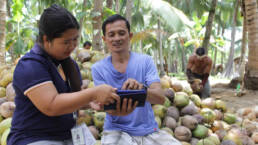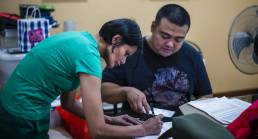PearlPay Bags 3rd Place at the Visa Everywhere Initiative Global Finals 2021
PearlPay, an all Filipino-led Fintech company, took home the third prize during the global finals of the Visa Everywhere Initiative (VEI) last September 15. Started in 2015, the initiative is an open innovation program that helps startups to unlock new opportunities and gives them a global platform to demonstrate their innovative solutions. Over the past 5 years, a total of 8,500 startups had applied and have collectively raised over $2.5 billion in funding.
For VEI 2021, over 2,000 fintech and startups around the world applied. It was narrowed down to a total of 25 companies with 5 companies selected per region: Asia Pacific, Central Europe, Middle East and Africa Region (CEMEA), Latin America, North America, and Europe.

Each region held its regional finals with the winner heading to the VEI 2021 Global Finals. For the first time, a Philippine-based startup was a VEI regional winner and represented not just the Philippines but the entire Asia Pacific in the Global Finals and won 3rd place.
“This one is for the Philippines. On behalf of the entire PearlPay team, we will be relentless in our pursuit to make financial services universally accessible,” said CEO Spark Perreras in his acceptance speech.
With the rampant issue of unequal financial access, PearlPay’s work in supporting the transformation of rural banks, microfinance institutions (MFI), and cooperatives in the Philippines and Indonesia may provide accessible financial services to millions of people – helping them grow and thrive in the long run.
Fintech’s key roles in achieving Financial Inclusion
This was originally published in Business World
One of the most notable shifts seen during the coronavirus disease 2019 (COVID-19) pandemic is the growing use of digital payments. Although cash and coins are still used, electronic wallets and digital services were further appreciated for the conveniences they provide.
This shift was highly driven by a bigger one that the pandemic caused to accelerate — digitalization. In particular, financial technology or fintech has played a much bigger role in connecting consumers with banks, merchants, and other financial services providers.
From the perspectives of consultancies, as digitalization pushed further forward amid the pandemic, fintech’s growth is imminent.
V Ram, vice-president and chief technology officer at Tata Consultancy Services, noted that by enabling more companies and financial institutions to consider digital platforms, the pandemic has pushed digital transformation by several orders of magnitude.
“The pandemic has pushed customers and companies over the digital technology tipping point and transformed adoption for many businesses into a priority. In just a few months, the crisis has accomplished years of digital transformation in most banks and companies by five to seven years,” he said during the first of a three-part BusinessWorld Insights online forum series themed “Fintech for a Financially Inclusive and Resilient Economy.”
He added that new opportunities for the finance sector are opening as most companies across the world has put up at least temporary solutions to meet newly scaling demands, much more than what they thought would be possible.
“As it was, the world continues to enjoy a modicum of entertainment, even if it was not in their regular settings like in the cinema. Trade and commerce also held up pretty well from short-term impacts thanks to fintech. Now is the chance for us to accelerate and take things forward. This is where we see fintech reshape the financial ecosystem,” he said.
Moreover, Frost and Sullivan ICT and Fintech Head Shailendra Soni noted that while the financial revolution started slightly late in the Philippines compared to its neighboring countries, the country will certainly catch up.
“There will be more and more [fintech] services launched [that are] particularly putting consumers and enterprises at the center to make them pay better, save money, invest money, and insure themselves,” Mr. Soni said during the second part of the online forum.
As people are beginning to experience these digital payment services and eventually realize their benefits, Mr. Soni added, the migration to more fintech-related solutions will also start.
“I believe there is going to be infrastructure on the Internet that will become much better. There will be policies, rules, and regulations in place that will further accelerate the overall adoption of fintech. There’s no U-turn; it’s going to grow,” he said.
Alongside such foreseen growth, fintech is expected to perform significant roles in further enabling financial inclusion in the country, empowering businesses, and expanding the access of basic financial services.
Financial experts are seeing in fintech solutions new opportunities to push the country closer to the goal of full financial inclusion, as the first part of the BusinessWorld Insights series tackled.
Bangko Sentral ng Pilipinas Assistant Governor Edna C. Villa said that while enlarging the economic pie is a necessary condition to reach the vision of creating a high quality of life among all Filipinos, it is not sufficient.
“The larger economic pie must be available at least for more, if not for all,” she pointed out.
Such ideals are the foundation for the BSP’s Digital Payment Transformation Roadmap for 2020 to 2023, which seeks to develop a digital payments ecosystem that targets current consumer and business needs to boost digital payments. One of its key targets is expanding the financially included to 70% of Filipino adults.
“We all know that payments is the most basic and most used financial service. Everyone uses it. It stands to reason therefore that there ought to be greater incentive to innovate in the payments sphere,” she said.
The transformation road map includes the acceleration of EGov Pay, the digital government collection system for taxes, licenses, permits, etc., established for secure, contact-free channels for Filipinos to transact with the government.
“The pandemic undoubtedly helped accelerate the preference for digital transactions. We are convinced that the trend will continue even post-pandemic,” Ms. Villa said. “If we are to maintain the momentum, however, we need to be deliberate in innovating to pave the way for greater financial inclusion. For our part, the BSP will continue to provide what we believe is an enabling regulatory environment for fintech innovations.”
Sparky Perreras, co-founder and CEO at digital banking solutions provider PearlPay, Inc., said that fintech companies have an opportunity to position themselves as the bridge to connect rural communities with the greater financial world.
“When COVID-19 struck, the biggest problem in terms of the business challenges for community-based financial institutions is in disbursing the loan proceeds. Because they don’t have the digital channels in place to disburse the loan proceeds for their existing customers due to the lockdown, their business for loans has been badly affected, as loan customers are forced to visit physical rural branches or microfinance institutions just to receive the loan proceeds,” he said.
“That’s one problem that we are passionate to solve by enabling these rural banks and microfinance institutions to join the digital revolution and digital economy.”
Maria Lourdes Jocelyn Pineda, president of digital-only bank Tonik, further emphasized that the country should take this chance to push towards the ideal of financial inclusion.
“The need for financial inclusion has never been better understood as it is in the present. Most economies are radically transformed because of the pandemic,” she said.
Ms. Pineda further noted that as consumer needs have evolved, a pressing need arises for the financial sector to truly embrace customer-centricity. “The new normal has efficiently curved the expectations of the banking customers, who now seek and choose institutions that they can entrust their money in a relationship built on mutual trust, transparency and benefits of the customers,” she said.
Furthermore, Ms. Pineda added that the Philippines is in no better position to take advantage of these opportunities, due to the unique characteristics of the Filipino population regarding digital adoption and literacy.
“As the country is the world’s leader in internet and social media usage, we believe that the Philippines is ripe for becoming a real leader in digital banking. To edge closer to a fully digitalized and cashless society, we must begin to listen and to address the customer need for a more inclusive and accessible way in banking that lets them grow their money the way they want to,” she said.
In addition, Lito Villanueva, chairman of FinTech Alliance Philippines, recognized that the fintech industry has been facing and dealing with the challenge of getting more Filipinos banked, especially as the 2019 Financial Inclusion Survey of the BSP showed that the number of unbanked Filipino adults was estimated at 51.2 million, out of a total adult population of 72 million two years ago.
“[W]e have seen this as a welcome challenge for the fintech industry to address this, especially now that going digital became the lifeline of the ordinary Filipinos to survive during the pandemic,” Mr. Villanueva said during the third leg of the online forum series.
He added that the central bank’s vision of a digitally and financially inclusive Philippines, enormous as it may seem, is nonetheless within the country’s reach, “especially with current fintech innovations and solutions being implemented nationwide.”
Supporting Large and Small Businesses
Fintech is also seen to serve as a reliable partner for businesses, from big enterprises to micro, small, and medium enterprises (MSMEs), as more consumers make use of fintech through digital services.
During the second part of the BusinessWorld Insights series, Robertson Chiang, founder, chief operating officer, and chief technology officer of online payment platform Dragonpay Corp., observed from its end that the usage of fintech notably increased amid the quarantine that started last year.
“Our transaction almost tripled during this period, which is a reflection of the people changing their habits from physical retail to going online,” Mr. Chiang said.
The trend seemed to be continuing this year, he added. Assuming that their transactions in the first half of 2021 would be the same in the second, it would almost double their transaction count in 2020.
Payment methods also shifted, Mr. Chiang observed. From the 21.1% e-wallet usage in 2019, it leaped to around 64% in 2020 and then around 71% in the first half of 2021.
Similarly, GCash’s Chief Commercial Officer Frederic Levy suggested that as many people continue to use such technology, enterprises should incorporate it in their operations as well.
“It’s getting more and more obvious for any form of businesses — including the small ones up to the big, organized ones — that they need to have [a digital] form of payment proposed to the consumer,” Mr. Levy said.
Moreover, fintech would evidently make payment convenient for the consumers. “So, the question [now] is what reason that would push you not to jump fintech if you are a small business,” he stressed.
As such, Mr. Levy later shared his advice for small and medium enterprises on adopting fintech solutions. “From an MSME perspective, simplicity and onboarding clearly are a critical component because it will look for a provider who can propose you an all-in-one solution,” he said.
“Make sure that you are going after the payment solution that makes sense for your business, and also going for the widest audience possible,” he added.
Similarly, PayMaya’s Chief Product Officer Mitch Padua also suggested that enterprises should look for the widest reach in terms of various payment types since second-guessing what consumers will have is difficult.
“[Look] for a partner that can provide all types of payment, whether it’s online or offline, sometimes your business can have a mix of both. It’s very hard to reconcile if you have different terminals, payment gateways, [and] partners for each type of payment,” Mr. Padua said.
Another thing for MSMEs to look at is competitive rates. “At the end of the day, each partner or payment solution will have different rates, and someone that can help you lend all of those payment types into one simple rate will make your life a bit easier,” he added.
Mr. Padua also noted that the growing presence of these digital payment solutions will be exponential and such growth will be driven by services like theirs as merchant payment is expected to be the next trillion-peso segment.
“Accelerating business to consumer, business to business, and business to government payments is where PayMaya commits to address,” Mr. Padua shared. “Over the short term, we’re coming up with exciting innovations to make sure we can seamlessly enable businesses to send payments to other businesses and individuals by offering solutions that capture settlement, all the way down to disbursement, and to encashment.”
Another factor expected to drive growth is that everyone can now become a digital entrepreneur with the transformation of MSMEs on the ground, he said. “We’ve begun the digital migration of our Smart Padala agents to become a one-stop shop for digital financial services. Beyond remittance, they can now serve as agents for digital payments, digital lifestyle, and digital banking services,” he added.
Expanding Reach to Customers
Alongside its role in realizing full financial inclusion in the country, fintech is expected to contribute more to making financial services more accessible to consumers.
During the last leg of the online forum series, executives from industry players noted how their services have started performing these roles. JF Darre, chief data officer and head of financial services of GCash, pointed out that over a third of its users have tapped on its financial services such as credit, savings, investment, and insurance that can be availed right from the GCash app.
He also noted the steady adoption of digital in terms of partnerships with the local government units (LGUs), with over P16 billion worth of social amelioration disbursed to over two million Filipinos through partnerships with LGUs.
“Digital can be part of the solution. It’s a complementary kind of solution in helping [amid] the crisis,” Mr. Darre said, adding that GCash has always focused on making their products accessible and affordable.
Meanwhile, Mar Lazaro, managing director and head of enterprise business and sales at PayMaya, noted that PayMaya’s users doubled in 18 months, with about 62% of new registrations accounted outside Metro Manila and growth coming from the Baby Boomer and Gen X demographics. He also noted that the e-wallet provider makes sure that no one gets left behind by this shift to digital as it serves consumers without a smartphone through PayMaya’s network of over 45,000 Smart Padala agent touchpoints.
As the financial inclusion push moves forward, Mr. Lazaro sees digital hubs within the communities to take a key role.
“Beyond remittance, community hubs such as sari-sari stores serve as bridges to the digital world. Soon, they will be digital agents for banks, e-commerce, and so on, and we’ll see that happening in the next coming months,” he said.
As it aims to expand access to financial services, fintech is also seen to have kickstarted synergy among industry players and other stakeholders.
“We recognize the importance of fintech in enriching our customer experience and promoting seamless, frictionless banking for all 24/7,” Mr. Villanueva of Fintech Alliance said. “Because of this, we believe that technology can help promote synergy amongst all players in the industry.”
Such synergy was evidenced among insurers, whose representatives in the panel shared their recent initiatives in making their products more accessible through fintech partners and other channels.
Zayd Tolentino, chief technology officer of Singlife Philippines, shared that technology helps address the gap between the insured and the uninsured, who are “composed of mainly middle-income families in search of protection products that fit their financial needs and can be easily adjusted when their needs change.”
Yet, Mr. Tolentino added, insurance technology (insurtech) cannot exist without fintech. “You need both technologies working together to disrupt the life insurance industry and deliver protection products that are truly digital.”
Rogie Niño, assistant vice-president and head of business project management office at Insular Life (InLife), considers insurtech as an extension of fintech, particularly an application that heavily touches consumer convenience and experience from the creation and distribution of insurance products to the administration of the insurance business.
Mr. Niño further highlighted that InLife partnered with platforms such as Maria Health and Lazada to make their services more available to consumers. “There are upcoming fintech partnerships that InLife is currently working on — the likes of GLife, Kwik.insure, [and] City Savings, to name a few — which depicts that we’re an active player in this digital ecosystem,” he added.
Mr. Tolentino, on the other hand, pointed out its use of blockchain technology, Application Programming Interface-driven approach, and cloud to make life insurance “totally mobile-first.” He added that their firm built a plug-and-play solution that only needs to connect to the partner’s Know Your Customer (KYC) data and payment platform.
“This plug-and-play solution, or what we call our microservices portal, houses all our protection products and can be integrated into the front end of any digital platform,” he explained. “This cohabitation setup allows a seamless user flow between two platforms without having to switch screens.”
“For any incoming partner, we simply create a partner node and embed our portal within their app so they can offer our products to their customers,” he added.
Meaningful Financial Inclusion
While the country has achieved much in its quest for financial inclusion with the help of fintech, much remains to be done.
Rex Gatchalian, mayor of Valenzuela City, pointed out the importance of building an enabling environment for fintech to thrive, which the government — particularly LGUs — should initiate.
“Before we become inclusive, government and LGUs must be able to provide that platform,” he said, pointing out that this “multidimensional issue” can be addressed by ramping up the national ID system and building up the country’s digital infrastructure. The latter, he stressed, heavily depends on internet service providers (ISPs).
“ISPs really have to shape up… It’s more of a private sector initiative in fixing infrastructure,” Mr. Gatchalian said.
Kiranjit Singh, head of the Strategy3 division at market research firm Ipsos, said that financial inclusion must be meaningful.
“We should have meaningful financial inclusion [that goes] beyond just transactions [and enables] the ability of Filipinos to utilize certain several financial tools for their personal growth [and the] growth of their business,” he said.
Mr. Singh added that digital inclusion cannot be the only solution for financial conclusion in the Philippine context. “You still need to have the basic, traditional, physical means of getting more Filipinos to become more financially inclusive,” he said.
He also noted that “financial inclusiveness is one of the greatest enablers for a rising middle class,” and this fact should direct current and future policies that will enable fintech.
“Fintech is actually the best leveler in terms of getting more people to be financially inclusive,” he emphasized.
Along this quest for financial inclusion, the cultivating financial literacy among Filipinos must not be overlooked.
Mr. Villanueva notes the finding in BSP’s 2019 survey that the reasons cited by 88% of mobile phone users who don’t use their phones to perform financial transactions were the lack of awareness, lack of trust, and lack of mobile signal, as well preference in physical transactions.
“To help improve this scenario, a responsive grassroots program on financial education and digital literacy must be launched,” he said, noting that the Rural Financial Inclusion and Literacy Bill and the Use of Digital Payments Bill, both pending in Congress, will deepen roots of financial education and inclusion if they push through.
Moreover, he recommends the integration of lessons on digital finance and fintech in the basic education curriculum; effective strategic communications through the use of alternative and digital media; and the maximization of social media reach and platforms to cultivate financial awareness and literacy and so shape the behavior of Filipinos towards a positive attitude with fintech and financial services.
Mr. Singh of Ipsos, meanwhile, noted the need to educate consumers on the do’s and don’ts of managing accounts and sharing sensitive data.
“Across Southeast Asia, we’re seeing right now the rise of scams or mule accounts. The new generation of financially inclusive [people must] know what they should and should not share with strangers,” he said.
Enabling regulations, pandemic pushed fintech sector’s expansion
This was originally published by Business World
THE CORONAVIRUS pandemic and an enabling regulatory environment have allowed more fintech firms to prosper in the Philippines and offer various products seen to help bring more of the population into the financial system.
In a BusinessWorld Insights session on Wednesday, experts discussed how the country’s finance ecosystem has evolved as more fintech firms emerged and forged partnerships with bigger players in the sector.
Bangko Sentral ng Pilipinas (BSP) Assistant Governor Edna C. Villa said the central bank’s regulatory approach has helped to boost the industry, with 220 fintechs recorded as of end-2020 from just 30 in 2016.
“The BSP’s stance on fintech innovation is to encourage responsive but responsible innovations. What I mean is the BSP would like to see the emergence of new models, products, and services, but at the same time, we have the assurance that timely identification and appropriate mitigation of risks associated with these new products are in place,” Ms. Villa said.
She noted key regulatory issuances such as BSP Circular 1105, which differentiated digital banks from traditional lenders, and BSP Circular 1122, which established an open finance framework, allowing players can share customer-consented data in aid of product development, are expected to help foster the continued growth of the financial sector as a whole.
V Ram, vice-president and chief technology officer of the Banking Financial Services and Insurance unit of Tata Consultancy Services, said the pandemic was crucial in the acceleration of the adoption of digital payments in the country.
Banks and companies have been forced to undergo digital transformation, which normally happens in a span of five to seven years, during the pandemic, he said. This helped facilitate the use of online payments, which became a “lifeline” for many businesses and individuals, especially during the time when many countries imposed lockdowns.
“There was minimum travel, minimum movement. If it was not for digital payments that served as a lifeline, the movement of goods and services would have been a problem,” Mr. Ram said.
But even with the fintech sector seeing accelerated growth recently, gaps and opportunities remain as financial inclusion remains low in the Philippines. BSP data showed only 29% of Filipino adults were part of the banked population as of 2019, leaving 51.2 million unbanked.
By 2023, the central bank wants to bring 70% of adult Filipinos into the banked population and have 50% of the volume and value of transactions done digitally.
To capture the underbanked and underserved Filipino market, financial services should be “non-intimidating, simplified, secure, and innovation-driven,” said Tonik Digital Bank, Inc. (Philippines) President Maria Lourdes Jocelyn S. Pineda.
“We understood that not all of the population are digital natives. Some people, especially the older set, are not too comfortable with using technology to do banking,” Ms. Pineda said.
She said fintech players should ensure their services are accessible and easy to use, especially for people not entirely at ease with making online transactions.
“How else do we do banking? People have been used to going to physical bank branches but they had to do for alternative transactions during the pandemic,” Ms. Pineda said.
Meanwhile, PearlPay CEO and co-founder Sparky Perreras shared that for their part, they opted to offer digital solutions for the smaller rural banks whose clients mostly only have passbooks that cannot be used in e-commerce and online payments. He said they also want to help microfinance institutions digitize.
Mr. Perreras is positive that with the welcoming regulatory environment in the country, fintech players will continue to grow and help in giving more Filipinos access to financial services.
“We give credit to our regulators. Because the BSP is one of the most aggressive in the region comparatively, it really changed the landscape,” he said. — L.W.T. Noble
Unlocking Business Opportunities in the Philippines Through Payment Gateways
Photo courtesy from Foodtank Website
Did you know that 67% of the Philippine population is connected to the internet? Yet the majority of Filipinos still use cash for their transactions. This is because the Philippines still has an underdeveloped payment infrastructure – which is why cash still remains king in the country.
But as we now live in a digitized economy, the government, businesses, organizations, and financial institutions are going digital.
However, institutions such as rural banks, cooperatives, thrift banks, and other non-banking institutions experience challenges that make it difficult for them to transform. Majority of these institutions remain disconnected from payment gateway infrastructure in the Philippines that could otherwise be beneficial for them. This limits the payment opportunities in their communities to over-the-counter transactions.
With the current situation, we need to help them digitize so they can access payment gateways and other digital opportunities to serve Filipinos in a better way.
Addressing the Problem
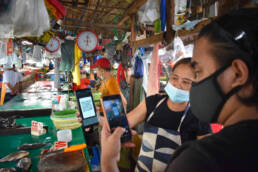
Photo courtesy from the Philippine Business and News Website
Transforming institutions will give them access to payment gateways. But keep in mind that transformation can’t be done instantly. We have to ensure their system can fully support digital capabilities. This is why they must have the right foundation first. With it, they can seamlessly transform, integrate and use other digital solutions, transition to mobile banking, and connect to opportunities in the digital economy.
This includes payment gateway integration to institutions in the Philippines. Having access will allow them to expand the payments they process and accept credit cards, debit cards, e-wallet, and other forms of payment aside from cash. Not only can institutions contribute to developing the country’s current payment infrastructure but also connect their customers to more convenient payments that ensure:

Safe and Secure Transactions
Payment gateways have a vital role in validating and verifying payment transactions. It has security measures that perform fraud checks and encrypt the customer’s payment information.
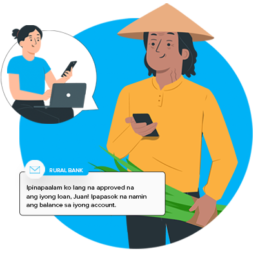
Faster Processing
It’s faster than manual processing, where customers can transact immediately and avoid long waits and long lines.

Convenient Transactions
Connecting institutions to a payment gateway will allow their customers to transact at any time, whether it be day or night.
The proper foundation will enable them to build an interoperable and interconnected payment system. This will make it easier for Filipinos to transact, connecting them to payment gateways even if they’re in hard-to-reach communities.
But how does having the right foundation help community-based institutions connect to payment gateways?
Connecting Institutions to Payment Gateways in the Philippines
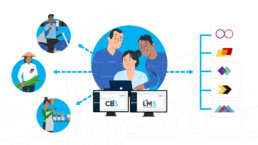
Having the right foundation for non-banking and banking institutions will ensure that not just their system is connected to a payment gateway. It will also connect other digital solutions integrated into their institution. To ensure this, they have to find the right partner that can help them achieve their transformation goal. Working together with the right partner that has the right set of solutions can help them transform more efficiently.
This will guarantee that their digitalization needs are met and institutions can fully connect to a payment gateway provider in the Philippines. With an ecosystem of solutions, they can provide easier and faster access payments and encourage growth in their communities.
As institutions connect Filipinos to payment gateways, it will encourage the growth of digital payments since they can pay bills and other due payments in the comfort of their own homes. Workers in the agricultural sector can earn more by receiving payments directly from consumers and wholesalers with no more need for a middleman. MSMEs can expand their customer reach, allowing people outside their area to make purchases from their stores. Even overseas Filipino workers (OFWs) can send remittances back home faster and more conveniently.
But that’s not just the benefit of a payment gateway.
The goal of digitalization is for everyone to participate and utilize the opportunities of the digital economy. Payments will be the first step to achieve this goal. It can be the catalyst for digitalization for Filipinos. While not everyone has savings or applies for loans, we all pay for bills for utilities, groceries, and other necessities. Once payments are digitized and people get used to doing online/digital payments, they can be encouraged to apply and use digital financial services.
By helping institutions transform in a better way, we can provide the help that every Filipino deserves and ensure widespread access to financial services to all, especially to the underserved and unbanked.
Highlights Reel: Next Chapter Raise, InvestHK, StartmeupHK Host Funding Fair for Female Founders
This was originally published by Sharon Lewis in Jumpstart
The half-day-long event discussed the funding landscape for female founders, its inherent problems with gender bias, and what investors need to do going forward.
InvestHK and StartmeupHK held a virtual edition “Female Funding Fair: Raising the Bar on Gender Equality” earlier this week as part of the StartmeupHK festival.
Organized by Next Chapter Raise, an Asia-based female funding ecosystem, the half-day event featured conversations between business leaders and investors across three panels.
The event focused on highlighting gender equality in business, and how gender equality in the funding ecosystem is good for businesses. Here are the key takeaways from the Female Funding Fair 2021.
Roundtable: Female Founders – a better investment?
The roundtable featured Melissa Widner from U.S.-based Lighter Capital, Amar Gokhale from India-based Intellecap, and Jeff Ng from Hong Kong-based Transcend Capital Partners.
Female founders receive less than 3% funding compared to their male counterparts, despite demonstrating twice the return per funded dollar. Moderated by Nicole Denholder from Next Chapter Raise, the roundtable deliberated on how the funding ecosystem could reboot itself to provide more access to female founders.
Gender bias was a predominant focus of the panel. Widner noted that when bias was taken out of the funding process by way of focusing purely on a data-based analysis, the gender skew in funding reduced considerably.
“When we look at debt financing, we are looking strictly at the financials. So what’s interesting is there’s a bigger percentage of funding that Lighter Capital has done to companies with either female CEOs or senior women at the helm. It’s about 20%, historically, which is just much greater than the average percentage for venture capital,” Widner said.
Putting all-female founders under a broad category would be inaccurate, Gokhale said. “A vast majority of women entrepreneurs are purely subsistence entrepreneurs. And what they need is microfinance or small ticket sizes, rather than equity. Gender-lens investing has to be sensitive to this.”
He added that investors needed to account for systemic barriers that female founders face. This helps them design solutions that work for these female founders, such as alternatives to collateralized lending, or non-financial risk mitigation measures (such as guarantee covers on bank loans). Financial institutions, he noted, need to look inwards and root out unconscious gender bias.
ScaleUp Showcase: “Female Founders changing the future”
The panel featured founders Precious Silva from Philippines-based fintech startup Pearl Pay, Emma Holcroft from Hong Kong-based biotech company Imunis, and Nicki Ramsey from Singapore-based fintech company CardUp.
True to its name, the session showcased business highlights of the three companies, and insights from the three founders on building early stage companies. The panel was moderated by Victor Lang, Co-founder and COO of Hong Kong-based fintech gini.
Silva noted that it was important for founders to profile the market properly in order to attract the right stakeholders. In terms of funding, Silva added that it’s important to also profile investors to understand which ones will have shared interests with the company, and can be the right fit as funding support. Further, she added that one of the strongest ways to market your product is to solve a pain point powerfully enough, resulting in organic growth.
In the fintech space, the complexity of doing business has increased with omnichannel fintech solutions burgeoning. This creates more room for SME to solve for this landscape, while giving investors a substantial revenue opportunity, Ramsey said. It is also important to evolve, Ramsey added, noting that while CardUp started with a consumer focus, they are currently almost entirely B2B.
When it comes to healthcare, the shift towards a patient-centric market has meant that companies need to devise patient-first solutions to capitalize on opportunities in the private healthcare space, Holcroft noted. Towards this, it was important that the company got partners from the medical field early on. Digitization has been a challenge, especially when it comes to privacy, she added.
In terms of challenges, the panelists noted that the representation of women leaders in the tech business space continues to be a problem with layers. This includes female founders often being outnumbered in meetings, and a male-dominated VC ecosystem possibly missing the plot on pain points pertaining to women consumers.
Panel Discussion: Female Financial Power
Speakers on the final panel of the day included Debbie Watkins, CEO and Co-founder of women-focused neobank Lucy, Dipika Jaikishan, Co-founder of app-based women’s investment platform Basis, and Adrian Warr, Founding Member and Co-Chair of Male Allies.
The panel was moderated by Gwen Faure, Board Member at Hong Kong’s The Women’s Foundation.
Imposter syndrome can often get in the way of growth for female founders, Watkins said. She cited a study that suggested that people who seem confident tend to be more successful than those who are competent. While women need financial support when starting their business, the lived experiences of women that cause them to develop imposter syndrome makes the founder journey that much harder, she said. Creating a community of support for female founders is the first step to leveling that balance, she added.
Warr pointed out other stereotypes or biases surrounding women at work. This include that more women at work means more problems at home, or that more jobs for women means lesser jobs for men. At the same time, companies can be hyper-focused on the short term costs and risks of diversity efforts, he said.
Jaikishan added that from a cultural perspective, a growing percentage of women were becoming owners of wealth, but managing their wealth remained a gray area. Male figures are groomed from a young age to be creators and managers of wealth, unlike women, she added.
Watkins and Jaikishan also offered advice to women entrepreneurs attending the event on managing their wealth, investing in the right places, having a healthy relationship with debt, and improving their financial confidence.
The panel concluded the event on a note of striving to change the investment ecosystem and workplaces by aiming to listen and learn about the problem of gender in these spaces.
As Angelica Leung, Head of Consumer Products at InvestHK, said in her address, “It’s great that we have these platforms for dialogue, for education, to understand, both from the investor side, and from the female funding team side, about what needs to be done, where are the gaps in knowledge, and is there a gap in understanding as well.”
Benefits of Digital Transformation: Encouraging the Growth of Financial Institutions and Communities in the Philippines
Photo courtesy of Reach52
The pandemic impacted the economy heavily. Businesses suffered, affecting millions of Filipinos in the country. The loss of jobs and income resulted in the majority of Filipinos needing financial resources to get through the impacts of COVID-19. Fortunately, there are financial institutions, such as rural banks, that are in the position to help.
Rural banks remain strong even with an ongoing pandemic. BSP Governor Benjamin Diokno said that rural banks are sufficiently capitalized to weather the economic crisis triggered by the pandemic. They had an increase in credit applications and loan disbursements from the agricultural and healthcare sectors even with strict community quarantine in place.
This emphasizes the important role of rural banks in the Philippines. In spite of the limitations caused by the pandemic, they continue to support and help Filipinos in need. Yet the majority of rural banks have yet to transform digitally. Helping them cross that bridge will allow them to access the benefits of digital transformation and maximize their potential in serving their communities.
Before we delve deeper into that, let’s take a look at how rural banks are doing in the midst of COVID-19.
How Rural Banks Support Filipinos during the Pandemic

Photo courtesy of Philippine Information Agency
Access to financial services is crucial, particularly to the agricultural and MSME sectors. These sectors remain the backbone of the Philippine economy. Agriculture ensures food production and security while MSMEs contribute to employment in the country. The vital roles of these sectors emphasize the importance of providing them with capital and credit in order to sustain their livelihood – even more so during the pandemic.
This is where rural banks come in.
They play an essential role in the Philippine financial system. As the frontliners for financial inclusion, they cater to the financial needs of the unbanked and underserved communities: farmers, fisherfolks, MSMEs, and low-income households in far-flung areas. Despite the financial constraints by the pandemic, they continue to meet the financial needs of their communities.
Farmers borrowing from rural banks continue to pay their loans according to the deadline, not opting to defer even after the debt moratorium imposed by the government. Meanwhile, 40% to 50% of borrowers from the microenterprise sector were voluntarily paying their weekly or monthly amortizations shortly after the lockdown.
The rural banking industry can also adjust the loan terms and payment based on their customers’ needs. Along with the agricultural and MSME loan programs from the government and relief measures from the BSP, marginalized Filipinos can continue to apply for loans that will help them recover from the pandemic.
Benefits of Digital Transformation in the Financial Industry

Photo courtesy of Manila Bulletin
Based on the current situation, 63.86 million Filipinos still lack access to financial services. This makes it even more critical for rural banks to digitize so they can support initiatives for improving financial inclusion in the Philippines.
As BSP Governor Diokno shared in his keynote speech during the Building the Next Wave of Digital Banks: Accelerating Innovation and Financial Inclusion event: “Through this digital transformation, we hope to usher in a new economy where every Filipino is empowered with access to financial services.”
To support this, financial institutions are preparing to shift to digital cloud-based core banking technology.(1)
Using the right core banking solution will enable institutions to build a proper foundation for their digital transformation. This makes it easier for rural banks and other institutions to integrate other digital solutions such as:
- SMS Solution: institutions can easily remind their customers about due payments, inform them about new products and promos being offered, and also send one-time-pin (OTP) once they have shifted to a mobile approach.
- Agent Banking: banks can use an agent banking solution where they can onboard new customers and collect payments outside of their branch with the information automatically synched to their system.
- Mobile Banking: they can eventually transition to mobile and launch their own app that allows customers to access their banking information and financial services from their phones.
The use of digital solutions will also help banks and other financial institutions to speed up the digitalization of financial services in the Philippines, empowering marginalized communities more effectively. They can discover new opportunities using data generated from digital solutions. Through the use of data, institutions can tailor new products that better fit the needs of farmers, fisherfolks, and MSMEs and provide them with personalized services based on their customers’ financial needs.
Digitizing rural banks will better equip them to serve their customers more efficiently and reach unbanked Filipinos faster. But how will they be able to transform?
The Better Way to Transform Your Institution
One of the benefits of digital transformation is to open up plenty of opportunities to financial institutions. Yet rural banks and other community-based financial institutions find shifting from traditional banking to a digital one a difficult task. Finding the right partner and digital solutions can address this concern. Working together with the right partner can not just transform your institution but also empower the communities you serve more efficiently.
To ensure this, you must have the right foundation first for your institution’s system. With the proper foundation, you can streamline your operations, cut down waiting times through loan approval, and onboard more customers. Doing so will allow underserved and unbanked Filipinos to access financial services faster and easier.

As we are now living in the digital age, it’s easy for businesses, organizations, and Filipinos that lack access to digital means to get left behind. The digitalization of the rural banking industry can foster their growth and unlock their fullest potential. This, in turn, can also open possibilities for all Filipinos, especially the unserved and underserved.
How Financial Institutions in the Philippines Can Go Mobile-First
Photo courtesy of Philippine Information Agency
Did you know that only 42.1% of internet users in the Philippines use banking and financial services apps? This means that with a total population of 110.3 million, only 46.44 million Filipinos have access to financial services while 63.86 million are unable to. The lack of access remains as one of the barriers to improve financial inclusion in the country.
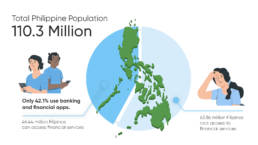
To address this, the Bangko Sentral ng Pilipinas (BSP) launched its Digital Transformation Roadmap. It aims to convert 50% of retail payment transactions to be digital and expand the number of financially included Filipinos to 70% by onboarding them to the formal financial system through payment or transaction accounts.
But how can we achieve this?
We can do it by helping institutions go mobile-first in the Philippines. According to We Are Social’s Philippine Digital Report 2021, there are 152.4 million mobile connections in the country. The use of mobile platforms allows Filipinos to access financial services more conveniently and support BSP’s Digital Transformation Roadmap goal.
Opportunities of Going Mobile in the Philippines

Photo courtesy of Freepik
The pandemic accelerated the use of digital and mobile solutions in the country. Digital payments grew significantly in 2020 as the volume of PESONet transactions grew to 15.3 million while InstaPay payments reached 86.7 million. Businesses have also moved to digital and mobile platforms to sustain their livelihood.
The financial industry is no exemption. Financial institutions have encouraged their customers to use their mobile banking platforms while some launched new mobile apps to continue serving the public even with community quarantine in place.
As more and more Filipinos now use digital platforms, understanding how to go mobile-first is relevant now more than ever. With the ongoing pandemic, we have to ensure the accessibility and availability of financial services to the public.
How Mobile-First Strategy Can Help Filipinos
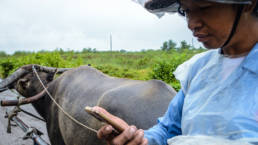
Photo courtesy of CGAP Website
The pandemic accelerated digitalization in many ways. However, the majority of the Philippine population still lack access to digital solutions. Using a mobile approach can address this problem. Not only will institutions make their services easily accessible but also support the communities that they serve. Here are several reasons that emphasizes the importance of going mobile:
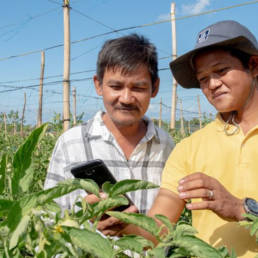
Photo courtesy of Yara FarmWeather
Onboard more Filipinos in the formal financial system
More people can be financially included, especially the vulnerable groups (low-income households, farmers, fishermen, and MSMEs.)
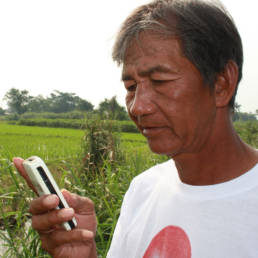
Photo courtesy of The New Humanitarian
Faster and easier access to financial services
Filipinos can apply for loans, open an account, and access other financial resources that they need to sustain their needs and livelihood with just their phone.
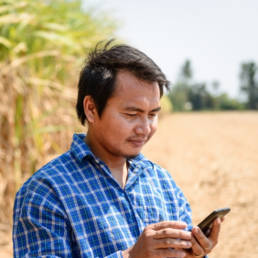
Photo courtesy of The World Bank
Help Filipinos transition to a cash-lite society
Financial institutions with the right digital foundation can connect to local billers in rural communities, encouraging the use of electronic payments (e-payments) even in far-flung areas.
Additionally, COVID-19 also changed Filipinos’ perspective on financial management. Based on Visa’s The New Normal: Pandemic Response Report, 81% of Filipinos believe that the current situation requires them to be more proactive about financial planning. Adopting a mobile-first strategy will make it easier for Filipinos to manage and plan their finances.
Going Digital: How to Go Mobile-First in the Philippines
The pandemic gave rise to the “New Economy.” As BSP Governor Benjamin Diokno explained: “The New Economy is an economy that is more inclusive. In connection with having a more technologically savvy population that is comfortable with using digital platforms to conduct their financial transactions, we are committed to reach more remote and far-flung areas through digital alternatives.”
This emphasizes that going mobile is more than just about being available on people’s phones. It’s about being fully digital. This requires institutions to have the right digital foundation to ensure full transformation. With the right foundation, you can integrate other digital solutions, participate in other industries such as supply chains, and engage in the “New Economy.”
But how can institutions go mobile-first in the Philippines?
Finding the right solutions provider guarantees that your institution’s needs are addressed. Financial institutions like rural banks and MFIs can support access to financial services anytime and anywhere. This, in turn, will ensure the participation of rural communities in the digital economy. Doing so can bridge the digital divide that prevents the unbanked and underserved sector from participating in the “New Economy” – helping us grow collectively in the long run.
Growth of Digital Payments in the Philippines Boosts Financial Inclusion
Photo courtesy of Geargodz from Freepik
The Philippines remains heavily reliant on cash despite available electronic payment (e-payments) options. Filipinos still prefer over-the-counter (OTC) transactions for bills payments and cash on delivery (COD) for online shopping. Come the COVID-19 pandemic, regulations, and policies pushed the public to use cashless payments to mitigate risks and ensure public safety.
This is evident according to BSP Governor Benjamin Diokno’s statement that the pandemic has greatly boosted the need for e-payments with banks and other e-payment service providers introducing more innovations to the public. This allowed the growth of digital payments in the Philippines, increasing by 66%. This current trend takes us a step closer to improve financial inclusion in the country.
The Role of E-Payments in Financial Inclusion

Photo courtesy of Thannaree from Freepik
Digital payments and financial inclusion work hand in hand. The continued growth of digital payments provides us an opportunity to improve financial inclusion in the country. While majority of Filipinos still don’t have an account, all of us engage in payments. It can encourage people to open an account to get access to digital and mobile payments as an alternative to cash transactions. However, e-payments aren’t just limited to paying bills and online shopping:
1. Conduct electronic fund transfers (EFT): marginalized Filipinos such as farmers, fisherfolk, MSMEs, and those living on day-to-day paycheck can receive salaries, pension, social security benefits, and government financial assistance safely and more quickly.
2. Expand market reach: allows microentrepreneurs to serve and reach more customers if they provide digital payments in their businesses.
3. Build transaction histories: the use of e-payments helps Filipinos and small businesses to have transaction histories that can support access to other financial services such as credit.
4. Encourage the use of other financial services: as more people get used to online payments, they can eventually apply for savings, investments, loans, and insurance.
Helping Institutions Connect to Payment Gateways

Photo courtesy of Skawee from Freepik
The Bangko Sentral ng Pilipinas (BSP) reported during their Ulat sa Bayan event last February 19 that the volume of PESONet transactions surged to 15.3 million while InstaPay payment reached 86.7 million in 2020. The growth of digital payments emphasized the need to improve digitalization in the Philippines. The 38.88 million Filipinos transacting digitally highlights the need for more institutions to connect to payment gateways to meet the needs of the public. But how can they do that?
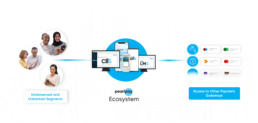
Financial institutions can partner with Fintech providers that can equip them with the proper foundation for their transformation. They can seamlessly integrate other solutions, such as mobile banking, to make it easier for customers to access digital payments. They can have an interconnected payment system to ensure safer and secure cashless transactions for Filipinos.
More than that, institutions can also provide accessible financial resources to their communities. Low-income families, MSMEs, and the agricultural sector have been affected heavily. The economic impact has resulted in the loss of jobs, income, and small businesses to close down. Digitalization will not just help people recover from the pandemic but also provide them the means to grow in the long run.
Understanding and Solving Digitalization Challenges in the Philippines
Photo courtesy of Visualhunt
The current state of digitalization in the Philippines shows that nearly 60% of Filipino households are unable to access digital solutions. The digital adoption challenges such as the lack of digital infrastructure, high cost and uneven quality of internet service, underdeveloped payment infrastructure, and low account ownership limit digitalization in the country.
Even though there have been advancements in digitalization in the last decade, these issues show that we’re still behind the world average on digital adoption. Currently, we rank 57th out of 63 nations in the 2020 IMD World Digital Competitiveness Ranking. Majority of Filipinos still find it difficult to access digital solutions and have no choice but to stick to traditional means.
Instead of transacting in the comfort of their own homes, they have to visit banks and bayad centers for over-the-counter (OTC) transactions. It limits the access of Filipinos and takes up more time compared to digital banking. With all these issues, what can we do to improve the current situation?
Addressing Digital Adoption Challenges in the Financial Industry
Understanding the digital adoption challenges that the financial industry face in the Philippines is the first step that we must take. Knowing these will help us learn how we can improve them. Let’s take a look at the following problems:
Challenge: Fragmented Solutions Landscape

Photo courtesy of Rappler
Most areas in the Philippines have limited or no access at all to digital solutions. With the uneven access, the available solutions are fragmented. Institutions like rural banks and microfinance institutions (MFIs) have no choice but to use various digital systems from different providers.
Solution: Access to an Ecosystem of Solutions

Photo courtesy of Odua from Freepik
To address this, there are Fintech companies that provide an ecosystem of solutions that addresses all their digitalization pain points to help them reach and serve more people in their communities.
Challenge: Difficult and Complicated to Use Digital Solutions

Photo courtesy of Shisuka from Freepik
Physical barriers such as slow internet are not the only reasons for transformation. Compared to other countries, digitalization is still something new in our country so there are some misconceptions about it. Financial institutions have the misconception that digital solutions are hard to use. They think that it’s too complicated and might take a long time to get used to the new system.
Solution: Transformation Support

Photo courtesy of Bugphai from Freepik
Fintech providers offer solutions that have intuitive experience since it’s designed like the social media apps that we use to make it easier for users. Additionally, providers also give transformation support. Fintech companies provide constant guidance and assistance during onboarding and after their go live to ensure that rural banks and MFIs can use the solutions more efficiently.
Challenge: Customers Don’t Understand How It Works

Photo courtesy of Thannaree from Freepik
Filipinos still use cash for their transactions even though there are already online and digital payments available. The reason why they still rely on cash is that they don’t know how it works. They worry that their accounts or information might be hacked if they use digital banking or digital payments.
Solution: Educational Support

Photo courtesy of Thannaree from Freepik
There are policies and regulations in place to protect their information. One example is the Republic Act 10173 or the Data Privacy Act of 2012 that ensures personal information in information and communications systems in the government and the private sector are secured and protected.
Another way that we can do to make more Filipinos aware of digital financial literacy is to provide educational support to unbanked and underbanked sectors. Financial institutions and Fintech companies can work together to help more people understand how digital solutions work to make it easier for them to use mobile and digital banking.
Improving The Digital Landscape In The Philippines For Better Financial Inclusion

Photo courtesy of Bugphai from Freepik
Addressing these digital adoption challenges will help solve one of the most persistent social problems – financial exclusion. With more than 51.2 million unbanked Filipinos, there are still plenty of people in the country that have no access to financial services.
By improving the current digital landscape in the Philippines, not only will it become easier for financial institutions to transform but we can also include more marginalized Filipinos – like farmers, fishermen, and MSMEs – into the formal financial system. Providing a more convenient way to access capital and other financial resources that will help rebuild their lives, sustain their needs, and grow their livelihood even with a pandemic happening.
As World Bank Country Director for Brunei, Malaysia, Philippines, and Thailand Ndiame Diop stated: Upgrading digital infrastructure all over the country will introduce fundamental changes that can improve social service delivery, enhance resilience against shocks, and create more economic opportunities for all Filipinos.
Transforming institutions like rural banks and MFIs will reduce manual operations, resulting in their increased capacity to serve more customers in their communities. Using digital solutions will help them open an account faster, save and grow their money, receive government cash aid, and apply for loans in the comfort of their own homes. These will help businesses and households to be more resilient and financially stable, especially after the pandemic.
Why Filipinos Remain Unbanked: Addressing Banking Challenges In The Philippines
Photo Courtesy of Science News
Despite the BSP initiative for inclusive finance and the boom of digital financial solutions during the pandemic, 51.2 million Filipinos remain unbanked. It means that the majority of Filipinos still don’t have an account. This limits the opportunities that they have, unable to access financial services and assistance that financial institutions provide.
The lack of access to these services makes it difficult to get the much-needed funds for their needs – and the pandemic has highlighted this even more. This is what the government and organizations are trying to solve. To address this, we must first understand their situation.
Why Filipinos Remain Unbanked
A Nielsen Company study found that at least 1 in 3 unbanked want to own loans, savings accounts, and life insurance, showing that they want to have access to financial services. But what are the reasons why Filipinos don’t have an account?
1. Lack of awareness and information

Photo Courtesy of National News
Most Filipinos are not aware of the benefits they can gain by being banked because they don’t have the details on opening an account and other banking products. As a result, they have misconceptions on banking:
- Banks are just for savings: Banks also offer loans, money transfers, remittances, bills payment, and even serves as a channel for government benefits and financial assistance.
- Don’t need a bank account: People are looking for financial services that can address their needs, especially during times of emergencies. But you need to have an account to be able to get easier access to such services.
As one of the main reasons why Filipinos remain unbanked, lack of information is not just about having misconceptions. It also plays a role in other challenges that Filipinos experience. By distributing the right information properly, more people can be encouraged to be banked.
2. Having a limited amount of money

Photo Courtesy of Freepik
This is one of the major concerns of Filipinos, especially for those living with day-to-day paychecks. They’re more focused on sustaining their daily needs, such as food and utilities, before thinking about saving money. And with the current pandemic, they’re even more concerned about their necessities.
Institutions like rural banks provide basic deposit accounts (BDA) that allows people to open an account for only Php100 or less – with some banks even offering as low as Php 1. Despite that, 60% of Filipinos are still not aware of BDA. Helping banks increase awareness will encourage more people to open an account and get access to more financial resources in the long run.
3. Lack of accessibility
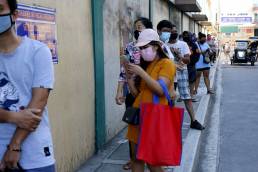
Photo Courtesy of Think ING
Did you know that there are 510 cities and municipalities in the country with no banking presence in 2019? This is why the majority of Filipinos find bayad centers, pawnshops, and ATMS the most accessible for financial transactions. It’s nearer and more convenient to go to compared to banks.
But most Filipinos are unaware of rural banks. In fact, there are more rural banks in the country than commercial banks. These institutions are scattered throughout the Philippines and are easier to reach compared to big banks.
4. Not having enough requirements

Photo Courtesy of South China Morning Post
One of the reasons why Filipinos are unbanked is that they don’t have enough requirements. BSP’s 2019 Financial Inclusion Survey found that 71% find it difficult to open an account because of the documentary requirements while 58% don’t have requirements when applying for a loan in a formal financial institution.
To address this, the government is working on the Philippine National ID which will replace the 2 valid IDs requirement, allowing financial institutions to make their account opening process easier and more convenient.
With these banking challenges in the Philippines, most turn to informal means like saving money at home and getting loans from family and friends, with some even turning to 5-6 lenders. Their money is left unsecured and limits their financial opportunities, especially with a pandemic going on. Helping institutions solve these problems can encourage more Filipinos to have an account to transact more easily and grow their money.
Addressing the Challenges for Better Financial Inclusion
Moving Forward: How You Can Recover and Grow After COVID-19Learning the advantages of the banking system can help Filipinos, especially those in poverty, get easier access to capital and other financial resources that not just sustain their needs but also help them grow and be financially independent in the long run. #TheBetterWay #MakingFinancialServicesUniversallyAccessible
Posted by PearlPay on Monday, December 21, 2020
As BSP Governor Diokno shared during the Financial Stability Report Press Briefing last November 18, businesses and households are in a different situation now, which is why it’s even more important to have equal access to banking services, especially for Filipinos in poverty.
With the new normal, they’re finding it hard to look for side jobs or “raket” to earn more money and sustain the needs of their families. But how can we help them gain access to capital and financial resources?
This is where digital transformation comes in. Empowering financial institutions like rural banks can help address the reasons why Filipinos remain unbanked. Using digital solutions help more people be more aware and informed about financial services that can meet their needs. They can also easily access these services, improving accessibility in communities with no banking presence.
By making financial services universally accessible, Filipinos can not only sustain their needs but also help them grow and improve their standard of living.




